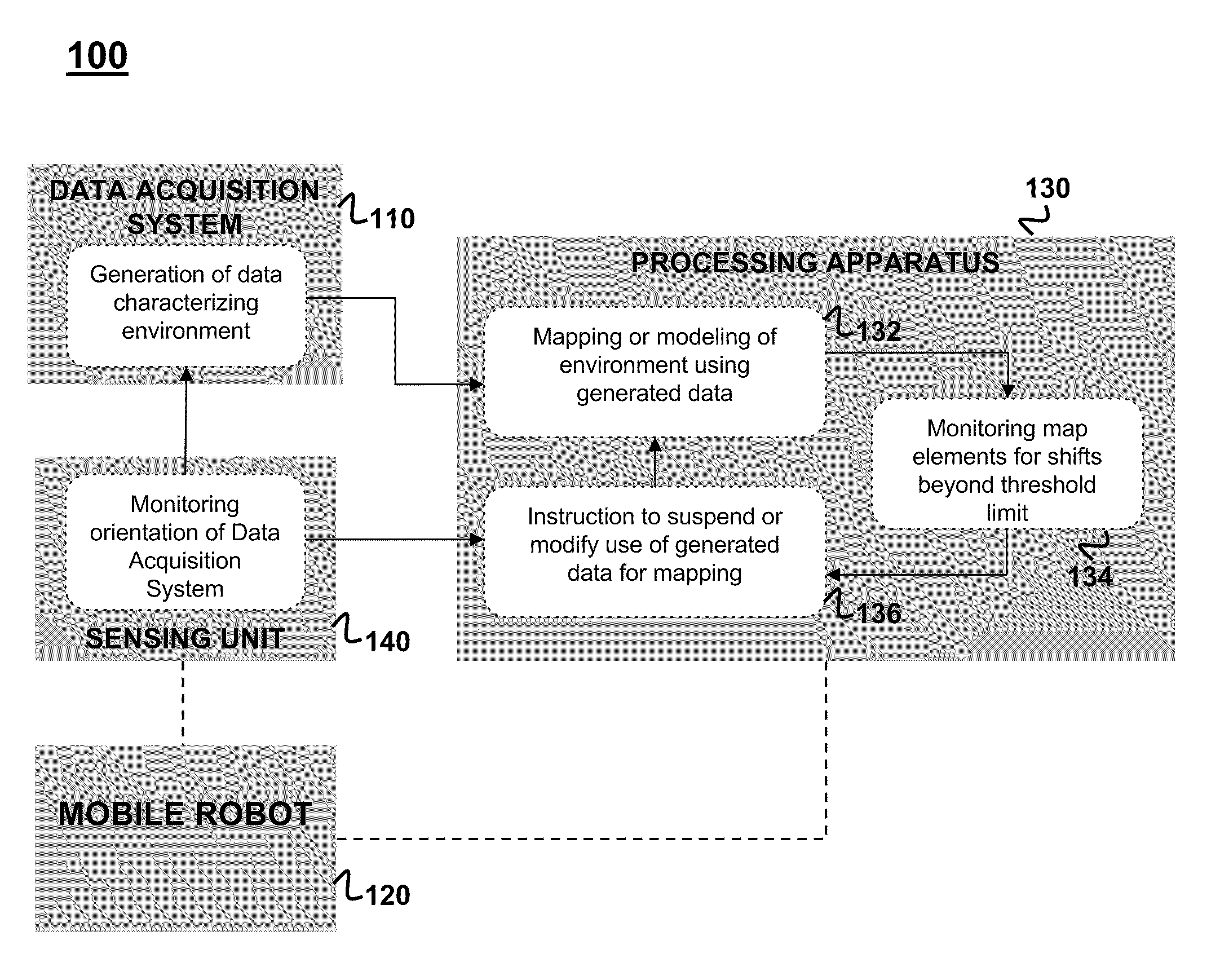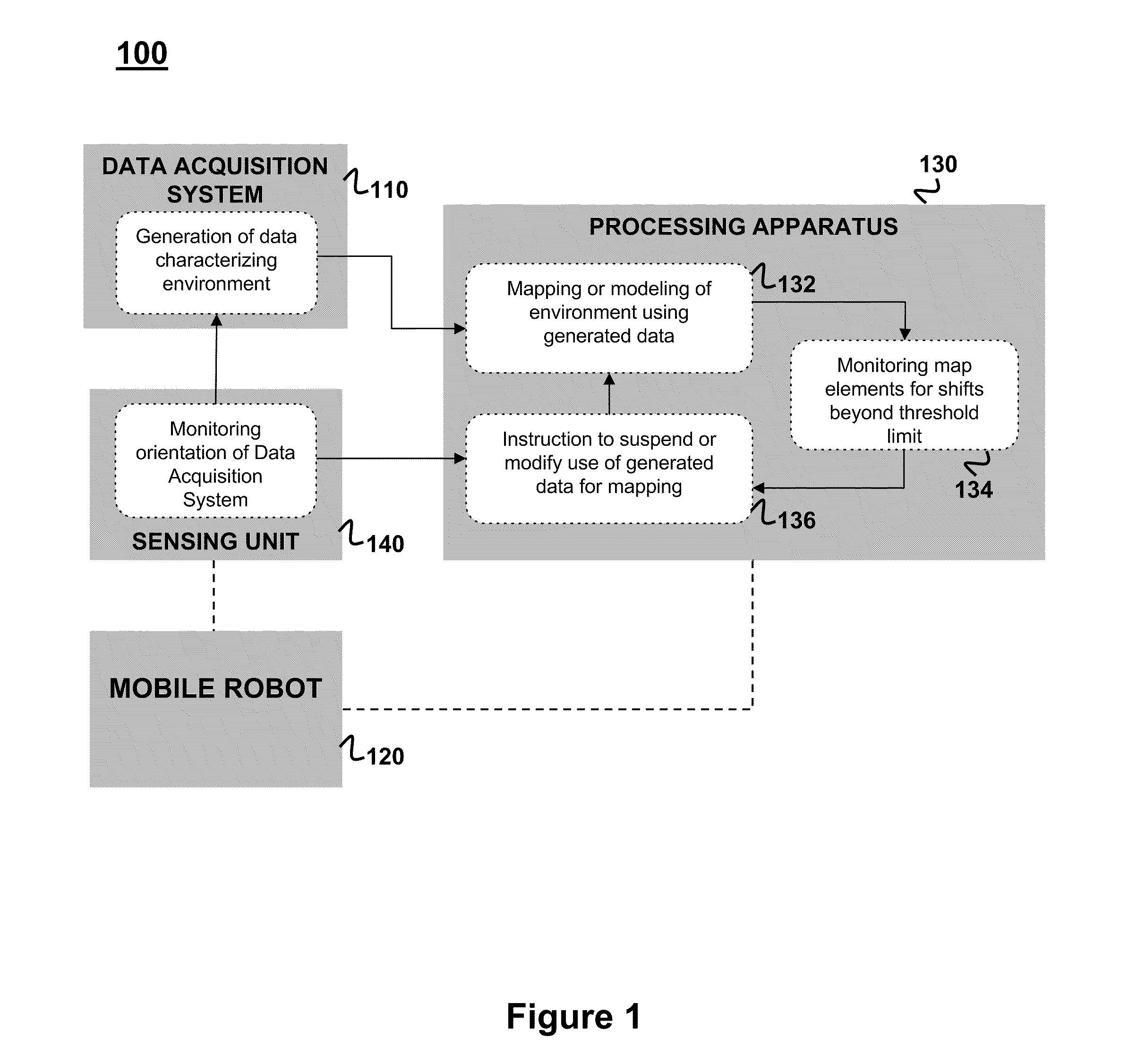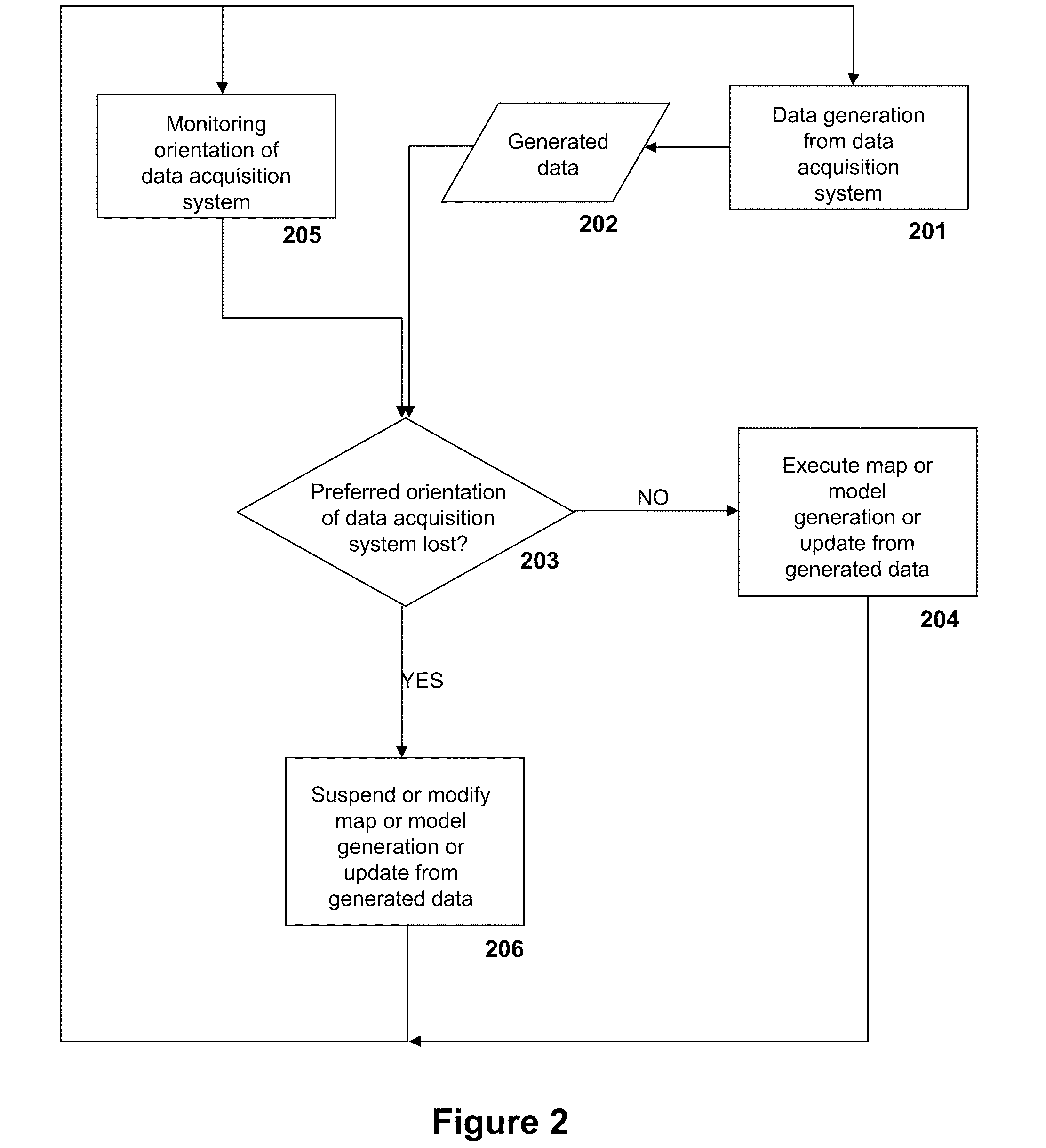Method and apparatus for simultaneous localization and mapping of mobile robot environment
a mobile robot and environment technology, applied in the field of mobile robots, can solve the problems of low economic hardware environment, high computational intensity of slam techniques, and low level of processing power and memory capacity for some consumer product applications, and achieve the effect of maintaining efficiency
- Summary
- Abstract
- Description
- Claims
- Application Information
AI Technical Summary
Benefits of technology
Problems solved by technology
Method used
Image
Examples
example
Determining Delocalization Through Introduction of Erroneous Particles
[0034]A typical approach to localization under a SLAM scheme might include the following steps:
[0035]1) For each particle:[0036]a) Apply an ideal motion model (e.g., odometry).[0037]b) Apply position and angle (x,y,θ) adjustments drawn from error model distributions.[0038]c) Evaluate with respect to the current map to compute weight.
[0039]2) Resample particles proportional to computed weights.
[0040]A typical localization iteration based on the above process might yield the particle weight distribution illustrated in FIG. 5.
[0041]In FIG. 5, the distribution of particles, sorted by weight, appears as a curve, indicating a mix of particles of low, middle and high weights. The particles with higher weights—those at the upper left side of the distribution—have a proportionally higher probability of representing accurately the robot's pose relative to other particles lower on the sorted distribution of weights. When the...
PUM
 Login to View More
Login to View More Abstract
Description
Claims
Application Information
 Login to View More
Login to View More - R&D
- Intellectual Property
- Life Sciences
- Materials
- Tech Scout
- Unparalleled Data Quality
- Higher Quality Content
- 60% Fewer Hallucinations
Browse by: Latest US Patents, China's latest patents, Technical Efficacy Thesaurus, Application Domain, Technology Topic, Popular Technical Reports.
© 2025 PatSnap. All rights reserved.Legal|Privacy policy|Modern Slavery Act Transparency Statement|Sitemap|About US| Contact US: help@patsnap.com



